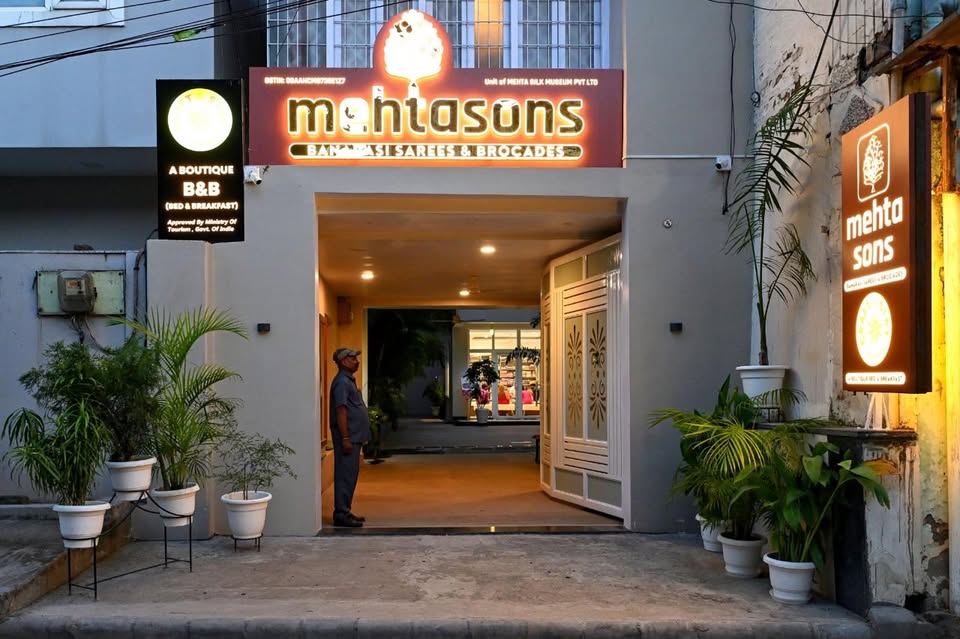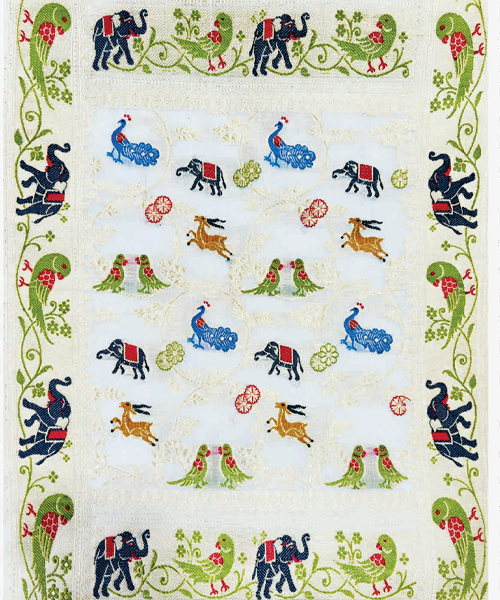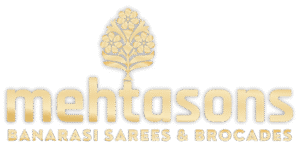
About Us
WELCOME TO THE HOME OF BANARASI SAREE HERITAGE:
The weaving of fine silk in Varanasi is believed to date back to the Vedic period, with references to the luxurious attire of gods and nobility in ancient scriptures. The city’s strategic location on the Silk Route facilitated the exchange of materials, techniques, and artistic influences from Central Asia, China, and Persia.
KIMKHWAB or ZARI: Traditionally made with Katan silk (pure mulberry silk), Banarasi sarees are known for their rich, lustrous texture. The hallmark of an authentic Banarasi saree Is the use of zari, threads of real gold or silver, or more commonly now, metallic threads coated in gold or silver finish. This gives the sarees their signature opulence and grandeur.
BROCADE: Brocade refers to richly decorative shuttle- woven fabrics, often made in colored silks and with or without gold and silver threads. In Banarasi brocades, intricate designs are handwoven using supplementary weft technique on jacquard or drawlooms. Popular motifs include kalga (paisley), bel (floral vines), jhallar (a fringe-like pattern), jaali (net) and mina (enamel-like detailing).
CRAFTSMANSHIP: Each Banaras saree is a labor of love, often taking weeks or even months to complete. Skilled artisan’s hand-weave every detail on traditional looms, using age-old techniques passed down through generations. The use of jacquard looms and the supplementary weft technique allows for complex patterns and rich textures, making each saree a masterpiece.
AUTHENTIC: Banarasi sarees have received the Geographical Indication (GI) tag, which legally protects the craft’s authenticity. Only sarees made in the traditional way in and around Varanasi can be labeled as Banarasi, preserving the integrity and heritage of the craft. Preserving and promoting the heritage “MehtaSons” is home to Banarasi Saree tradition carried on by three brothers from the Mehta family, well known for patronizing the artistry of weaving.

